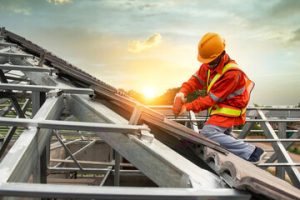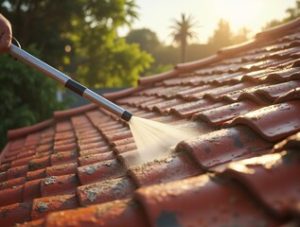Roof repair is one of the most important aspects of home maintenance. A damaged roof can lead to water leaks, energy loss, and structural issues. Addressing problems early prevents costly replacements. Modern techniques make repairs more efficient and durable.

Many homeowners overlook small signs of roof damage. Cracked shingles, loose flashing, and minor leaks may seem harmless. However, even small flaws can worsen quickly with weather changes. Timely inspections and repairs are key to avoiding larger problems. Visit bearsvalleyroofing.ca to learn more.
Roof repair today emphasizes advanced materials. Synthetic underlayments, reflective coatings, and stronger adhesives increase durability. These upgrades improve resistance to heat, wind, and rain. They also extend the lifespan of the entire roofing system.
Moisture is a major enemy of roofing structures. Leaks allow water to penetrate and damage insulation and wood. Mold growth and rot often begin undetected under layers. Repair strategies now include moisture barriers that block water intrusion.
Energy efficiency has become part of roof repair solutions. Cool roofing materials reduce heat absorption. Repairs may involve adding reflective coatings to existing surfaces. This helps lower indoor temperatures and reduce energy use.
Ventilation repair is also crucial for roof longevity. Poor airflow traps heat and moisture inside the attic. This weakens the roof deck and accelerates shingle wear. Properly repaired ventilation maintains balance and extends roof life.
Storm damage often requires immediate attention. High winds can rip off shingles or loosen flashing. Repairs focus on securing weak areas before more damage occurs. Emergency services provide temporary protection until permanent fixes are made.
Modern roof repair involves precision tools. Infrared scanners detect hidden leaks and insulation problems. Drones are used for safe inspection of steep or high roofs. These technologies improve accuracy and safety during assessments.
Seamless repairs are increasingly popular. Instead of patchwork, entire sections are restored for uniform strength. This approach prevents weak spots and future leaks. Homeowners benefit from consistent appearance and performance.
Repairing flashing is a common need in older roofs. Flashing around chimneys, skylights, and vents often deteriorates first. Replacing or resealing these areas prevents leaks. Skilled workmanship ensures long-lasting results.
Flat roof repair requires unique solutions. Ponding water is a frequent issue on flat surfaces. Repairs may involve improving drainage systems or adding tapered insulation. Effective flat roof repairs extend usability and prevent structural stress.
Sustainable roof repair practices are gaining traction. Recycled materials and eco-friendly coatings are now used. These methods reduce environmental impact while maintaining strength. Repair is not only functional but also environmentally responsible.
Insulation upgrades often accompany roof repair. Damaged insulation contributes to energy loss and indoor discomfort. Replacing insulation during repair improves efficiency. It also enhances the comfort and value of the property.
Roof coatings are a cost-effective repair option. Elastomeric and reflective coatings seal cracks and protect against UV rays. Coatings extend roof life without full replacement. They are especially useful in climates with harsh sun exposure.
Gutter repair is often linked to roof performance. Blocked or damaged gutters cause water backup on the roof. Repairs ensure water drains properly away from the home. This prevents leaks, rot, and foundation damage.
Tile and slate roofs require specialized repair techniques. Cracked or missing tiles can be replaced individually. Repairs must match the existing color and texture for consistency. Skilled craftsmanship is essential to preserve aesthetic appeal.
Metal roofs present different repair needs. Corrosion, loose fasteners, and seam separation can occur over time. Sealants and specialized coatings restore metal roofing effectively. Repairs preserve the durability and sleek appearance of these systems.
Seasonal roof repair strategies improve protection. Winter preparation includes sealing gaps and checking insulation. Summer repairs focus on reflective coatings and ventilation. Seasonal attention reduces weather-related damage.
Chimney and skylight areas are vulnerable to leaks. Repairs often involve resealing joints and replacing flashing. Proper repair protects both the roof and interior spaces. Attention to detail ensures long-term waterproofing.
Emergency roof repair kits are now available for quick fixes. Homeowners use them for temporary patching after storms. These kits prevent further damage until professionals arrive. Quick action reduces repair costs significantly.
Green roof repair is becoming more specialized. Vegetation layers can damage membranes if not maintained. Repairs may involve root barriers, drainage systems, and new soil layers. Proper repair supports both aesthetics and sustainability.
Roof repair also impacts home value. Potential buyers look for well-maintained roofs. Documented repairs and upgrades increase property appeal. Investing in timely repairs pays off during resale.
Preventive roof repair programs are emerging. Regular inspections identify small issues before they escalate. Scheduled maintenance reduces emergency repair needs. Homeowners gain peace of mind with consistent protection.
Thermal imaging is now used in roof diagnostics. It reveals hidden moisture and heat loss. Repairs can target problem areas precisely. This reduces costs and improves repair effectiveness.
Safety is a priority in roof repair. Professionals use harnesses, ladders, and protective gear. Training ensures safe handling of steep or slippery surfaces. Safety protocols protect both workers and homeowners.
Roof repair methods now focus on weather adaptability. Materials that withstand extreme temperatures are chosen. Repairs consider wind resistance, UV exposure, and heavy rain. Durable solutions match regional climate conditions.
Insurance often covers roof repair after storms. Documentation and professional reports support claims. Repairs must meet industry standards for approval. Clear records ensure smooth processing of insurance coverage.
Reinforcement is another aspect of repair. Weak roof decking may be strengthened during service. This prevents sagging and structural failure. Reinforced roofs withstand more stress from weather and weight.
Soundproofing improvements are sometimes included in roof repair. Adding insulation and specialized materials reduces outside noise. This is beneficial in busy or noisy environments. Repairs enhance comfort in more ways than one.
Roof repair also addresses fire resistance. Modern materials reduce fire spread risks. Repairs may include replacing outdated or damaged fire-resistant barriers. Safety is improved while preserving roof integrity.
Some homeowners opt for aesthetic upgrades during repair. Matching colors, textures, and modern finishes enhance curb appeal. Roof repair becomes part of overall design improvement. The home looks refreshed while staying protected.
Advanced adhesives are used in shingle repair. They provide stronger bonds against wind and rain. Adhesives improve repair durability significantly. The roof holds up better under extreme conditions.
Historic roof repair requires careful techniques. Preserving original materials and appearance is vital. Specialists combine traditional methods with modern technology. Repairs protect heritage while ensuring functionality.
Modern roof repair integrates with smart technology. Sensors detect leaks, moisture, and temperature changes. Repairs include installing monitoring systems for early alerts. This innovation keeps roofs consistently protected.
Roof repair contributes to sustainability goals. Extending roof life reduces waste from full replacements. Using eco-friendly products minimizes impact. Repairs align with environmental responsibility and homeowner savings.
Professional roof repair ensures warranties remain valid. DIY attempts may void manufacturer guarantees. Certified repair protects both investment and warranty. Trusting experts secures long-term benefits.
Innovations continue to shape roof repair practices. From smart sensors to sustainable coatings, methods evolve. Homeowners benefit from stronger, safer, and more efficient solutions. Roof repair remains essential for lasting home protection.

